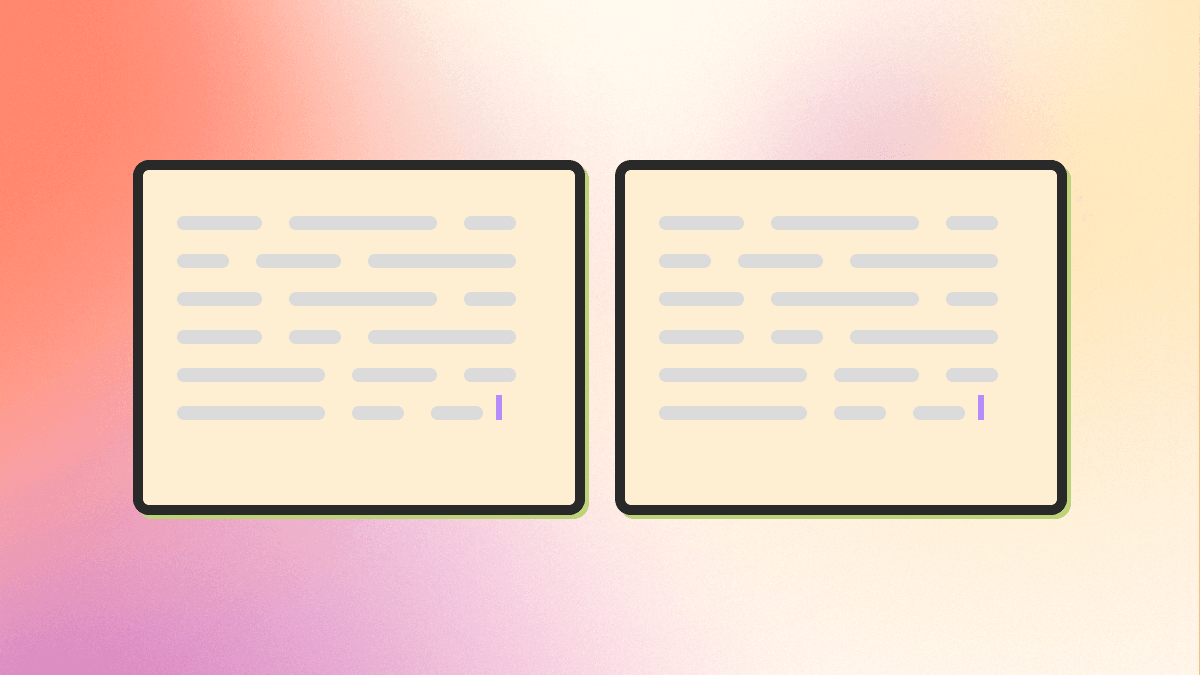
npm install @convex-dev/persistent-text-streamingThis Convex component enables persistent text streaming. It provides a React hook for streaming text from HTTP actions while simultaneously storing the data in the database. This persistence allows the text to be accessed after the stream ends or by other users.
The most common use case is for AI chat applications. The example app (found in
the example directory) is a just such a simple chat app that demonstrates use
of the component.
Here's what you'll end up with! The left browser window is streaming the chat body to the client, and the right browser window is subscribed to the chat body via a database query. The message is only updated in the database on sentence boundaries, whereas the HTTP stream sends tokens as they come:

Pre-requisite: Convex#
You'll need an existing Convex project to use the component. Convex is a hosted backend platform, including a database, serverless functions, and a ton more you can learn about here.
Run npm create convex or follow any of the
quickstarts to set one up.
Installation#
See example/ for a working demo.
- Install the Persistent Text Streaming component:
npm install @convex-dev/persistent-text-streaming- Create a
convex.config.tsfile in your app'sconvex/folder and install the component by callinguse:
// convex/convex.config.ts
import { defineApp } from "convex/server";
import persistentTextStreaming from "@convex-dev/persistent-text-streaming/convex.config.js";
const app = defineApp();
app.use(persistentTextStreaming);
export default app;Usage#
Here's a simple example of how to use the component:
In convex/chat.ts:
const persistentTextStreaming = new PersistentTextStreaming(
components.persistentTextStreaming,
);
// Create a stream using the component and store the id in the database with
// our chat message.
export const createChat = mutation({
args: {
prompt: v.string(),
},
handler: async (ctx, args) => {
const streamId = await persistentTextStreaming.createStream(ctx);
const chatId = await ctx.db.insert("chats", {
title: "...",
prompt: args.prompt,
stream: streamId,
});
return chatId;
},
});
// Create a query that returns the chat body.
export const getChatBody = query({
args: {
streamId: StreamIdValidator,
},
handler: async (ctx, args) => {
return await persistentTextStreaming.getStreamBody(
ctx,
args.streamId as StreamId,
);
},
});
// Create an HTTP action that generates chunks of the chat body
// and uses the component to stream them to the client and save them to the database.
export const streamChat = httpAction(async (ctx, request) => {
const body = (await request.json()) as { streamId: string };
const generateChat = async (ctx, request, streamId, chunkAppender) => {
await chunkAppender("Hi there!");
await chunkAppender("How are you?");
await chunkAppender("Pretend I'm an AI or something!");
};
const response = await persistentTextStreaming.stream(
ctx,
request,
body.streamId as StreamId,
generateChat,
);
// Set CORS headers appropriately.
response.headers.set("Access-Control-Allow-Origin", "*");
response.headers.set("Vary", "Origin");
return response;
});You need to expose this HTTP endpoint in your backend, so in convex/http.ts:
http.route({
path: "/chat-stream",
method: "POST",
handler: streamChat,
});Finally, in your app, you can now create chats and them subscribe to them via stream and/or database query as optimal:
// chat-input.tsx, maybe?
const createChat = useMutation(api.chat.createChat);
const formSubmit = async (e: React.FormEvent) => {
e.preventDefault();
const chatId = await createChat({
prompt: inputValue,
});
};
// chat-message.tsx, maybe?
import { useStream } from "@convex-dev/persistent-text-streaming/react";
// ...
// In our component:
const { text, status } = useStream(
api.chat.getChatBody, // The query to call for the full stream body
new URL(`${convexSiteUrl}/chat-stream`), // The HTTP endpoint for streaming
driven, // True if this browser session created this chat and should generate the stream
chat.streamId as StreamId, // The streamId from the chat database record
);Design Philosophy#
This component balances HTTP streaming with database persistence to try to maximize the benefits of both. To understand why this balance is beneficial, let's examine each approach in isolation.
HTTP streaming only: If your app only uses HTTP streaming, then the original browser that made the request will have a great, high-performance streaming experience. But if that HTTP connection is lost, if the browser window is reloaded, if other users want to view the same chat, or this users wants to revisit the conversation later, it won't be possible. The conversation is only ephemeral because it was never stored on the server.
Database Persistence Only: If your app only uses database persistence, it's true that the conversation will be available for as long as you want. Additionally, Convex's subscriptions will ensure the chat message is updated as new text chunks are generated. However, there are a few downsides: one, the entire chat body needs to be resent every time it is changed, which is a lot redundant bandwidth to push into the database and over the websockets to all connected clients. Two, you'll need to make a difficult tradeoff between interactivity and efficiency. If you write every single small chunk to the database, this will get quite slow and expensive. But if you batch up the chunks into, say, paragraphs, then the user experience will feel laggy.
This component combines the best of both worlds. The original browser that makes the request will still have a great, high-performance streaming experience. But the chat body is also stored in the database, so it can be accessed by the client even after the stream has finished, or by other users, etc.
Background#
This component is largely based on the Stack post AI Chat with HTTP Streaming.